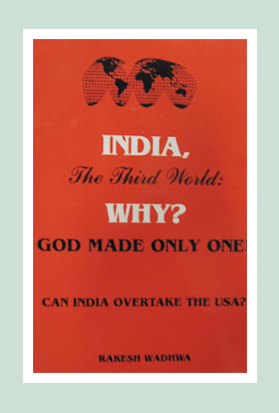Equal Income Distribution – Characteristic of Free Economies?
The wealthiest countries are those that have free economies. There is a popular belief that the more capitalist economies in Europe, North America and even Asia (like Japan) have greater financial inequalities. But the true picture reflects a different scenario altogether. Such countries are better off than the socialist economies when it comes to distribution of wealth.
Financial Equality: Distribution of Wealth
The proponents of socialism and communism argue that these systems foster the distribution of wealth in a fair way. Let’s analyze this through the Gini Coefficient, a tool that measures income inequality. It ranges between 0 and 1, with 1 reflecting the highest inequality.
If we compare the socialist and capitalist economies, we will very quickly come face to face with the truth. China had a Gini coefficient of 0.47 in 2010. Another socialist economy, Venezuela recorded a figure of 0.41 in the same year. On the other side, UK’s Gini coefficient stood at 0.33 in 2010 and in Canada it was as low as 0.32. Not just this, even the US, which is considered to be the most aggressive of the free economies, had a Gini coefficient of 0.45, better than that of China.
Obviously, 100% equality is too utopian a concept to be possible. However, improving on the scale is achievable. Having seen that the absolute gap between the rich and the poor appears to be wider in socialist economies, one must also ponder on whether income inequality is bad.
Financial Equality: Standard of Living
Even in the face of income inequality, what is important is whether the standard of living in the economy is improving or worsening over time. In a free economy, there is equal opportunity for everyone. However, some opportunities require higher education and specialized skills, which become available only to the richer sections of society. While this is true, when the rich take these opportunities and generate wealth for themselves, they simultaneously generate income in the economy. More opportunities emerge and this “trickle down” effect reaches the poorer sections of society, leading to their betterment. For instance, when a highly skilled architect sets up his company, he may employ other architects to design buildings. He may also employ people to convert the designs into meaningful instructions for the construction company. People may be hired to look into the admin, HR and accounts of the firm. While all these people may not earn as much as the skilled architect, there is generation of income for all.
Thus, even when the rich get richer and the gap widens, it is not as though the not-so-rich are getting poorer. When the rich grab opportunities to improve their status, they create more jobs, boosting the incomes of the middle and lower income households. This “trickle down” effect raises the standards of living of the society as a whole.
India recorded the highest rates of GDP growth in the 2000s, after the initiatives to liberalize the economy in the 1990s. The government levies huge taxes on the rich, so that wealth can be distributed in the society. Is this actually resulting in greater equality? More importantly, is this resulting in improved standards of living across society?
 Rakesh Wadhwa. Ever since, I was a school boy, I knew India was on the wrong path. Socialism was just not what we needed to get ahead. Government controlled our travel; government controlled our ability to buy and sell; and government controlled our freedom to move our money. My life has focused on the inherent rights people have. When I was in college, I never understood, what the governments meant by their "socialistic attitude". If people are free to buy, sell and move their capital themselves without any restrictions by state, then the welfare of people is inevitable & hence the countries they live in will become wealthy. The government has no right whatsoever, to point a finger at me or my business. I am not a revolutionary. I just want to light up my cigarette and not get nagged about it. I believe in non-interfering attitude to attain more.
Rakesh Wadhwa. Ever since, I was a school boy, I knew India was on the wrong path. Socialism was just not what we needed to get ahead. Government controlled our travel; government controlled our ability to buy and sell; and government controlled our freedom to move our money. My life has focused on the inherent rights people have. When I was in college, I never understood, what the governments meant by their "socialistic attitude". If people are free to buy, sell and move their capital themselves without any restrictions by state, then the welfare of people is inevitable & hence the countries they live in will become wealthy. The government has no right whatsoever, to point a finger at me or my business. I am not a revolutionary. I just want to light up my cigarette and not get nagged about it. I believe in non-interfering attitude to attain more. 
 The Bastiat Award is a journalism award, given annually by the International Policy Network, London. Bastiat Prize entries are judged on intellectual content, the persuasiveness of the language used and the type of publication in which they appear. Rakesh Wadhwa won the 3rd prize (a cash award of $1,000 and a candlestick), in 2006.
The Bastiat Award is a journalism award, given annually by the International Policy Network, London. Bastiat Prize entries are judged on intellectual content, the persuasiveness of the language used and the type of publication in which they appear. Rakesh Wadhwa won the 3rd prize (a cash award of $1,000 and a candlestick), in 2006.
What the readers are saying…